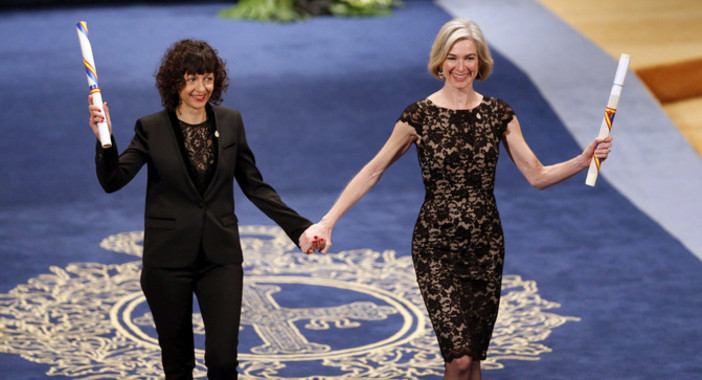On Thursday, Emmanuelle Charpentier and Jennifer Doudna were awarded the 2016 Oréal-Unesco Award “For Women and Science” for their work on CRISPR-Cas9. In 2012, the two scientists published a description of this technique “which has since been unleashed on biology laboratories across the world, heralding an astonishing breakthrough given its ease of use”.
Nowadays, the discovery of CRISPR-Cas9 has had a “colossal” impact both in terms of research and on all biological applications. It is fascinating but, at the same time, gives cause for concern. “Aren’t the two scientists “entitled to ensure that the way in which their technology is applied follows the direction and values of their research work? Isn’t every scientist responsible for the ethical and human scope of his/her discoveries?” Jennifer Doudna believes that “scientists who develop extremely powerful technologies are responsible for getting involved in these discussions, not to make decisions but to inform the general public about the possibilities”.
“CRISPR Cas9 facilitates high-quality gene surgery,” explained Emmanuelle Charpentier. As far as she is concerned, “the ultimate aim would be for this ‘revolutionary’ technique to correct human genetic diseases”. With this aim in mind, she “jointly founded the CRISPR Therapeutics biotechnology society, which seeks to use CRISPR Cas9 technology to combat certain diseases such as blood disorders or certain forms of cancer”.
Interviewed by Le Monde, Jennifer Doudna explained that, at the present time, the limitations were still of a technical nature: “there is still a lot of work to do to establish how this genome printing system functions in various cell types” and thus “to actually control these changes”. “We must make sure that it is safe and effective” and “that will take time,” she announced.
She also believes that ethical questions will be raised when the technique is applied to germ cells, “regardless of whether these cells are from humans or living organisms”,“the ethical issue is to know who will apply these techniques, who will have access to them, who will decide to use them and for what purpose. Should this method only be used for therapeutic purposes or can it also be employed to satisfy the desire of parents wishing to have taller children with blue eyes”?
The recent authorisation granted in the United Kingdom to test CRISPR-Cas9 on human embryos is “appropriate” according to Jennifer Doudna. “If we want to make sure that the technology is safe, then this is the type of testing that has to be carried out”. She shares the Medical Academy’s opinion in that pre-implantation diagnosis is an “alternative” in orderto “avoid the harmful mutations of a certain number of genetic diseases”. However, she also said that “clinical applications on human embryos, which could lead to implantation to create a genetically printed person, should not be carried out today. It is too early”.
Le Monde (21/03/2016); Les échos (21/03/2016); La dépêche (21/03/2016)

